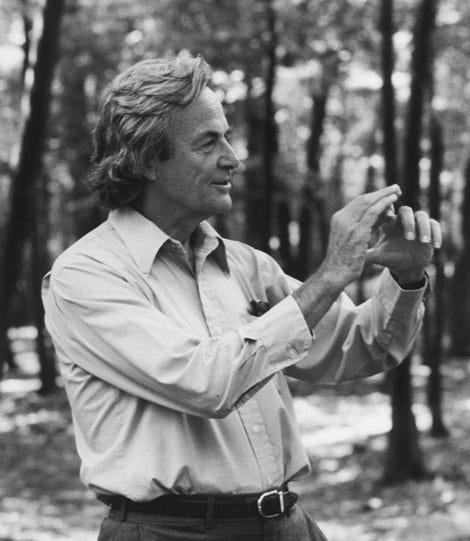On play
When Feynman describes how he made the discoveries that led to his Nobel Prize in physics, he said he was just playing.
I'd invent things and play with things for my own entertainment
In a society that leans towards pragmatic focus over playful exploration, perhaps we should encourage more opportunities for the latter. It’s for this reason that playful design in software is becoming a bigger conversation. It delights users with interactions that invite them to explore. When done well, this curiosity leads to new discoveries. Learning becomes fun.
Play has always had its roots in learning. Take this example from 12th century Mongolian horse culture. Horseback riding was critical for navigating the Mongolian geography and the games children played reflected this.
Temujin and Jamuka formed a close friendship as they hunted, fished, and played the games the children were taught to improve their everyday skills. Mongol children, both boys and girls, grew up on horses. From infancy, they learned to ride with their parents or older siblings until, after only a few years, they managed to hold on by themselves and ride alone. Usually by age four, children had mastered riding bareback, and eventually how to stand on a horse’s back. While standing on the horse, they often jousted with one another to see who could knock the other off. When their legs grew long enough to reach the stirrups, they were also taught to shoot arrows and to lasso on horseback. Making targets out of leather pouches that they would dangle from poles so that they would blow in the wind, the youngsters practiced hitting the targets from horseback at varying distances and speeds. The skills of such play proved invaluable to horsemanship later in life. - from the book Genghis Khan and the Making of the Modern World
As I thought about the different experiences we call play, a pattern, a loop seemed to repeat itself. Anticipation and subsequent reveal. Storytellers call this loop suspense. Anticipation builds as unanswered questions accumulate leading up to the big reveal. For example, in 12th century Mongolia, the games children played sparked questions about how they will perform or who will win a competition. In software, playful design introduces questions through a curiosity to see what will happen. Playful experiences emerge from these questions, the what, why, who, where and how. However, this loop only works when the reveal continues to surprise. Otherwise, we begin to lose interest and find other games to play.
In game design, we can find examples of when this loop breaks down and when this loop works.
A popular game mechanic in MMOs is the leveling system. Players start off at a low level and through certain actions, can increase their level. This gives the player more abilities. At first, this mechanic is a lot of fun. Players anticipate what they will be able to do with each new level. Over time, the incremental increases in ability can become repetitive, boring and no fun. The player has mastered the mechanic and any additional leveling becomes a grind. The reveal has lost the element of surprise.
On the other hand, the Super Mario series of platformer games offers a masterclass in creating moments of learning and fun using this loop. Inspired by an East Asian narrative structure known as Kishōtenketsu, new game mechanics in Super Mario are introduced in a subtle but clear way, developed over the level, given an unexpected twist, then wrapped up at the end of the level with a challenge that incorporates all of the player’s new learnings. Just as you begin to learn one game mechanic, a new one is introduced expanding what is possible.
This loop of anticipation and subsequent reveal introduces a perspective that we can use to understand the experiences around us. Take the palpable excitement of the crowd at a fashion show, new movie screening or concert anticipating the big reveal. As we continue to design new experiences whether it be in software or any other medium, we can draw on the patterns of playfulness and fun from every part of our lives. Inspiration is out there, if you know where to look.
Addendum
Thanks to Azlen for introducing me to the idea of Kishōtenketsu used by Super Mario games and to Anselm for sharing this excerpt from Richard Feynman’s book that helped me write the introduction to this essay.


